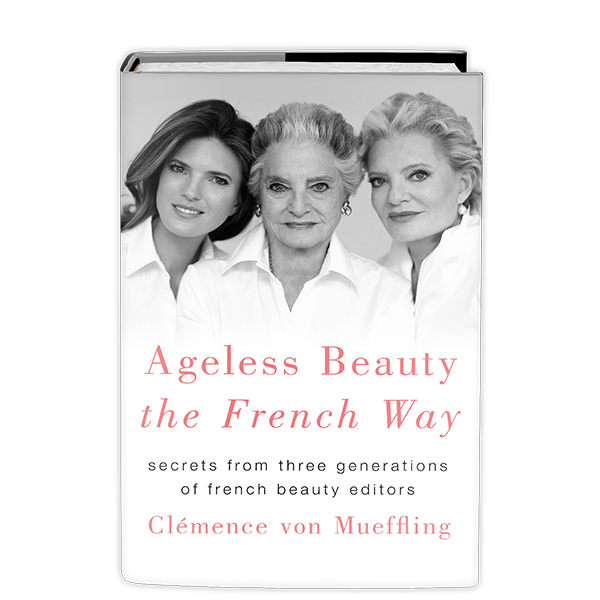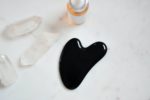
Beauty & Power in Art of the Past Records of Seduction & Influence
Old Masters are a record of what was deemed beautiful at a certain time in a certain place, embodied within women of power and influence.
Jean Cocteau, French artist and longstanding friend of Pablo Picasso, once said that genuinely good art outpaces beauty. So, art may seem ugly until it meets with beauty again. And I couldn’t agree more. The mechanical revolution allowed us to instantly reproduce nature with cameras — and now, phones. This development freed painting from its traditional representational role and complicated its relations with beauty. Yet, art still has the ability to foresee trends and to define them. Historically, women in positions of power are often responsible for the trends that dissipate through art.
Old Masters are a record of what was deemed beautiful at a certain time in a certain place. When we try to understand the development of trends over time, we notice the relationship between beauty and power seems constant through time and space. As such, the three examples below will explore this interconnection between beauty and power.
The Healing Power

Figure 1. Nefertiti, Neues Museum, Berlin
“The beautiful one has come” is the translation of Nefertiti (c. 1370 – c. 1330 BC), Queen of the 18th Dynasty of Ancient Egypt & the Great Royal Wife of Pharaoh Akhenaten. Her bust at the Neues Museum in Berlin is an effigy of beauty and femininity. The black lines above and below her eyes are now iconic and familiar to us. In our collective imagination, we completely associate kohl with Ancient Egypt’s beautification rituals.

Figure 2. Painting in an Ancient Egypt tomb (detail), British Museum, London
While not Egyptian, Cleopatra joined some other men and women in adopting the practice. As such, kohl could be understood as socially important. Alternatively, people used exaggerated kohl designs to conjure up the protection of the Gods, in particular Horus and Ra, as well as warding off illnesses.
In 2010, a chemical analysis of cosmetics samples from Egyptian tombs cast a new light on the role of kohl. The desert dust, in addition to insects and bacteria of the flooding Nile, was causing a number of eye diseases including conjunctivitis and cataracts. Kohl was most commonly made of galena, a black mineral mixed with oil or animal fat. The chemical study revealed that two non-natural lead chlorides were synthesised to make the cosmetic. Instead of causing lead poisoning, it surprisingly stimulated immunological defenses. If we also consider the antiseptic properties of the silver found in galena, kohl provided instant protection against illness and skin ailments.
The healing power of kohl shows us that in Ancient Egypt, dramatic beauty was very much a matter of well-being.
The Political Power

Figure 3. Unknown artist, Armada Portrait, 1588, oil on oak panel,
Wobburn Abbey
On August 9, 1588, England was expecting an invasion of the Spanish Armada. Elizabeth I of England told her gather troop in Tilbury: “I have the body of a weak, feeble woman; but I have the heart and stomach of a king, and of a King of England too.”
The same year, an unknown artist portrayed the Queen who notoriously defeated the famed Armada. The Queen rests her chiselled hand on the globe, asserting her mastery of the seas. Simultaneously, the victory is depicted on two panels in the background. Her outfit and rich jewelry broadcast her triumph. The puffed arms occupy a great part of the composition; as such, they annihilate the idea of a weak body. Despite all the details of the power allegory, it is interesting to note that her complexion is alabaster. Her skin color echoes the whiteness and freshness of the pearl adorning her dress and her very imposing necklace. Why?
Last of the five monarchs of the Tudors Dynasty, Elizabeth I is also known as the Virgin Queen. In fact, this situation threw uncertainty over her succession. If pearls are symbols of purity, her pearl-like complexion was certainly very intentional. In collaboration with her heavy use of makeup, the painters endeavored to give her what would become known as the “Mask of Youth.” Elizabeth I constructed this self image as a propagandistic overtone. As a result, one is to forget that the forever young queen is childless. The trope became official through a government decision of 1594. At Elizabeth I’s court, beauty was also a political affair.

Figure 4. The Rainbow Portrait, Queen Elizabeth I in her mid-sixties
The Power of Seduction
Seduction might be beauty’s most common power of attraction. To understand this, we can look at a person who keenly optimized her beauty and seductive power: Jeanne Antoinette Poisson.
Known as Madame de Pompadour, she was the official chief mistress of Louis XV from 1745 to 1751. She remained a major influence at his court until her death in 1764. A great patron of the arts, she championed what would become the ‘rococo’ style. Among the many artists who portrayed the Marquise, her favorite portraitist was Francois Boucher.

Figure 5. Jeanne-Antoinette Poisson, Marquise de Pompadour, Francois Boucher (1750)
In 1756, a rumor spread at Versailles that the Marquise was giving up her rouge. Many equated her lack of makeup to her withdrawal from public life and renouncement of power to the king. Then, Boucher represented Madame de Pompadour at her toilette in 1958. Despite being only 37 at the time, she was dealing with migraines, fevers and various ailments. According to the Marquis d’Argenson, her conditions rendered her skin as dry as wood. But, her eyes remained the beacon of her legendary beauty.
A year before the portrait, she had drawn her will. Yet, the portrait is an ode to the beauty criteria of the time. Her eyes are sparkling, her body is plump and her curves are contoured. Her rouge rests at the center of the painting as she applies it. The color of her cheeks echoes the ruffled ribbons surrounding her. The rouge stands out next to the whiteness of her dress, skin and powdered hair.
So, her legendary beauty and seductive power are still at work. Further, the cameo around her wrist shows the profile of the king. This detail reinforces her influence over him, while the rose background also reminds us of her authority.
Beauty & Influence Today
In conclusion, art from the past plays a role as a record of trends. Women at Elizabeth I’s court would pluck their hair to mimic her receding hairline. Would I go as far to be trendy? I hope not, but beauty trends still exercise immense power. Today, rather than queens and marquises, celebrities and influencers catch our eyes. While we might not be able to define their power yet, we continue to delight in discovering the beauty secrets of our age.
Sources:
httpss://recipes.hypotheses.org/12837
Elise Goodman-Soellner, Boucher’s “Madame de Pompadour at Her Toilette”, Simiolus: Netherlands Quarterly for the History of Art , 1987, Vol. 17, No. 1 (1987), pp. 41-58, Published by: Stichting Nederlandse Kunsthistorische Publicaties URL: httpss://www.jstor.org/stable/3780687
Finding Out Egyptian Gods’ Secret Using Analytical Chemistry: Biomedical Properties of Egyptian Black Makeup Revealed by Amperometry at Single Cells
Issa Tapsoba, Stéphane Arbault, Philippe Walter, and Christian Amatore*†Anal. Chem. 2010, 82, 2, 457–460, Publication Date: December 23, 2009, httpss://doi.org/10.1021/ac902348g
Melissa Hyde, The “Makeup” of the Marquise: Boucher’s Portrait of Pompadour at Her Toilette, The Art Bulletin , Sep., 2000, Vol. 82, No. 3 (Sep., 2000), pp. 453-475, Published by: CAA URL: httpss://www.jstor.org/stable/3051397
Sindya N. Bhanoo, Ancient Egypt’s Toxic Makeup Fought Infection, Researchers Say, New York Times, January 2010, httpss://www.nytimes.com/2010/01/19/science/19egypt.html

Reine co-founded Galerie E.G.P, a contemporary art gallery based in Paris, in 2009. She is an art historian and freelance curator, with over 40 global exhibitions, and supports institutions such as Tate and the Whitechapel Gallery. A published art writer, Reine is a member of the New Art Dealers Association and of the Association of Women in the Arts. You can keep up with Reine on Instagram or on her website.






